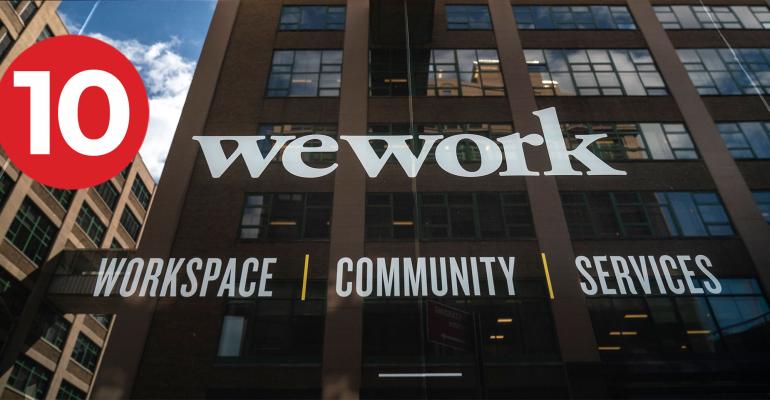- WeWork, Reeling From Cash Crunch, Tries to Shore Up Financial Footing “Yardi, a real estate software provider in Santa Barbara, Calif., is among the investors considering new investment in the company, the people said. Yardi has already been working closely with WeWork as it expands beyond offering co-working spaces to additional services like software for office management at its properties.” (The New York Times)
- A Flood of Defaults Swamps Big Names and Big Properties, Especially Offices “Tough times are especially pronounced in the office market, which is reeling from workers’ embrace — and employers’ acceptance — of work-from-home arrangements. Once viewed as a temporary measure forced by the pandemic, virtual work has outlived the era of social distancing and mask mandates.” (Commercial Observer)
- What Do Brokers Do When They Can’t Even Give Office Space Away? “For the JLL team, the deal was a victory due in part to favorable conditions: A long-term client sought growth in a down market, so there was plenty of open Class-A space at great prices. But it also highlighted the amount of homework and extended timelines required for large office leases during the current slump.” (Bisnow)
- The Rent Growth Narrative Is Out and NOI Is In “Fundamental to understanding real estate operations is knowing that NOI is a function of income and expenses. Focusing exclusively on income, or solely on expenses, misses the mark. While income ran up over the past two years, expenses—many of which are difficult for an operator to control—started taking big bites out of NOI.” (Multi-Housing News)
- Multifamily Keeps Benefiting From Hurting Housing Supply “It’s impossible to look at multifamily independent of single-family homes because the two markets are intertwined with household formation. Between 2012 and 2022, there were 15.6 million household formations in the US, according to NAR, with nearly 2.1 million last year.” (GlobeSt.com)
- Ventas CEO: Risk of Self-Managing Senior Living Units Not Worth the Current Reward “Cafaro said that the REIT is not opposed to doing so where it makes sense, citing the ‘great success’ of the company’s vertically integrated property management for medical office buildings. She noted that Ventas has also ‘thoroughly vetted’ the idea of a senior housing operating platform.” (Senior Housing News)
- Pricing, Interest Rate Challenges Test Investors in APAC Commercial Real Estate Markets “With stability top of mind, respondents prefer the rock-steady markets of Japan and Singapore for real estate investments. Some 68 percent expect to increase Japan exposure this year, while 60 percent plan to up investment in the city-state. Australia and South Korea round out the top four at 53 percent each.”(Mingtiandi)
- Build-to-Rent Projects Weathering Higher Interest Rates, Shifting Strategies “In a market that’s been disrupted by rising interest rates and unsteady financial markets, Reddy and other single-family rental investors and developers haven’t lost sight of the bigger picture. Demand for housing still exceeds supply, especially from millennials raising young families who want a home with a backyard in the suburbs.” (Urban Land)
- Why retailers are embracing fixed CAM costs “Fixed CAM provisions resolve debates and arguments about maintenance costs before they even happen. But to understand how and why fixed CAM is emerging as a simple and appealing solution, we first must examine how we got here.” (Chain Store Age)
- Kemp's New Rural Workforce Fund Doesn't Address The Heart Of Georgia's Housing Crisis “Amid this surge of unaffordability, Kemp’s administration didn’t allocate any state funding toward housing assistance. The state spent $903M of federal funds between 2020 and 2022 from the Temporary Assistance for Needy Families program, which includes rental assistance, according to a 2022 state expenditure report by the National Association of State Budget Officers.” (Bisnow)
0 comments
Hide comments





